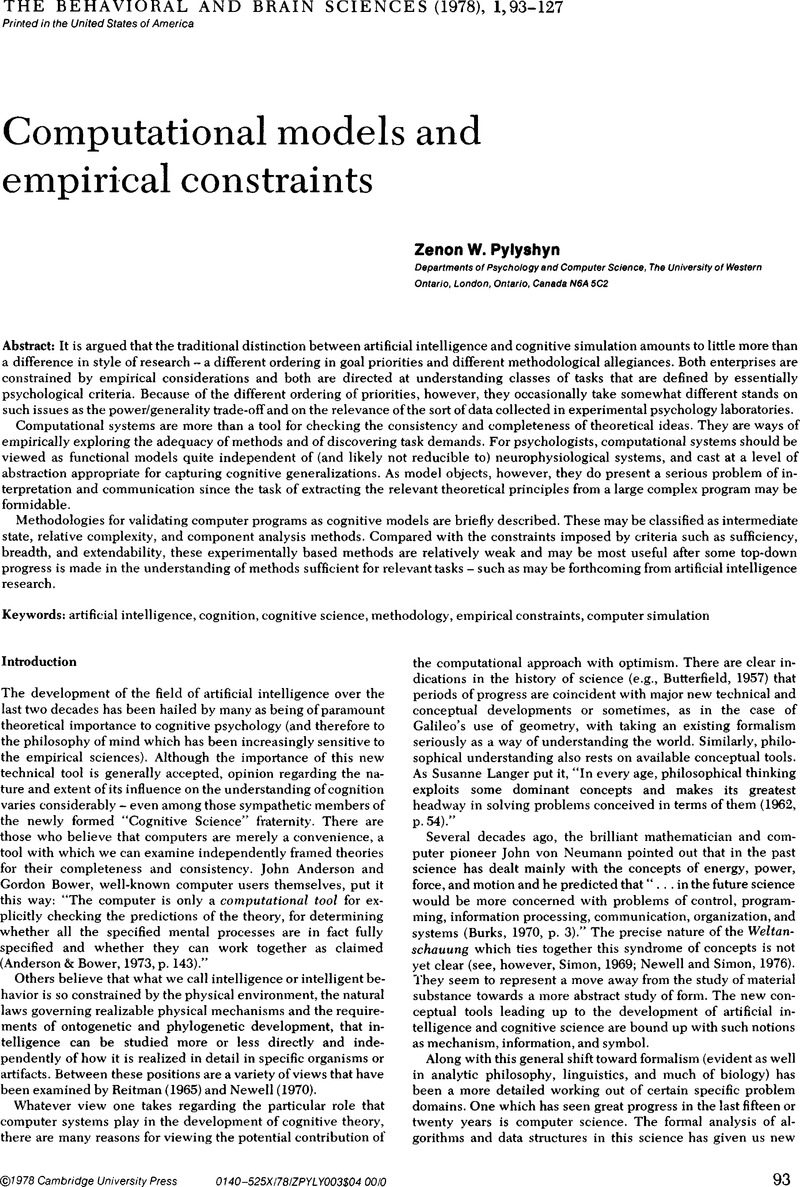No CrossRef data available.
Article contents
Task constraints and process models
Published online by Cambridge University Press: 04 February 2010
Abstract
An abstract is not available for this content so a preview has been provided. Please use the Get access link above for information on how to access this content.

- Type
- Open Peer Commentary
- Information
- Copyright
- Copyright © Cambridge University Press 1978
References
REFERENCES
Gibson, J. J.The senses considered as perceptual systems. Boston: Houghton Mifflin, 1966.Google Scholar
Huffman, D. A. Impossible objects as nonsense sentences. In B. Meltzer & D. Michie (Eds.), Machine Intelligence 6. Edinburgh: Edinburgh University Press, 1971.Google Scholar
Mackworth, A. K.Interpreting pictures of polyhedral scenes. Artificial Intelligence, 1973, 4, 121–137.CrossRefGoogle Scholar
Marr, D.Early processing of visual information. Philosophical Transactions of the Royal Society of London B. Biological Sciences, 1976, 275, 483–524.Google ScholarPubMed


